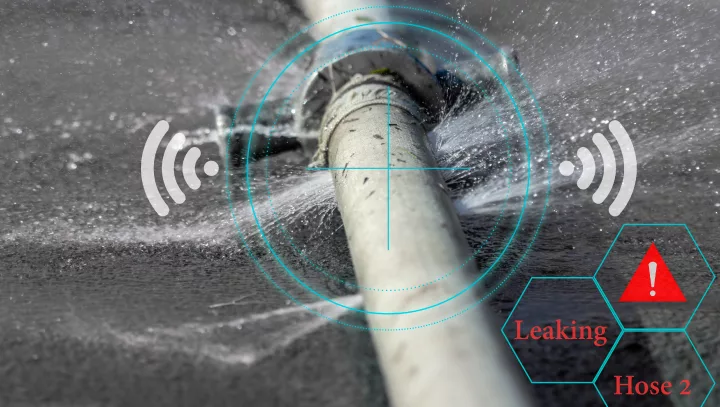Expert Water Leak Detection Providers: Protect Your Home from Expensive Damage
Expert Water Leak Detection Providers: Protect Your Home from Expensive Damage
Blog Article
Ingenious Solutions for Very Early Detection of Water Leaks in Structures and Infrastructure
From innovative leak detection modern technologies to the deployment of IoT sensing units for real-time surveillance, the landscape of leak avoidance is progressing quickly. Automated water circulation analysis systems are improving just how leaks are determined and resolved, leading the means for a proactive method to water leak detection.
Advanced Leak Discovery Technologies
Advanced leakage discovery modern technologies, furnished with innovative sensing units and algorithms, play a critical duty in quickly determining and identifying water leaks in various settings. These modern technologies use a mix of acoustic, thermal, and electromagnetic sensing methods to detect leaks precisely. Acoustic sensors detect the audio of getting away water, enabling accurate localization of the leak resource. Thermal imaging identifies temperature level modifications triggered by water leak, supplying one more reliable technique for leakage recognition. Electromagnetic sensing units can determine changes in magnetic fields caused by water, supplying yet one more layer of leak discovery capability.

IoT Sensors for Real-Time Tracking
In the world of modern-day water leakage detection, the combination of IoT sensing units for real-time surveillance represents a critical improvement in boosting aggressive leak detection capabilities. These sensing units use continual surveillance of water systems, offering real-time information on water circulation prices, stress variations, and temperature modifications. By leveraging IoT technology, these sensors can identify even the smallest anomalies in water usage patterns, making it possible for early identification of prospective leakages prior to they rise into major problems.
IoT sensing units transmit information to a centralized platform, where sophisticated formulas assess the information and create notifies or alerts when irregularities are identified. This real-time monitoring ability permits residential property proprietors or facility managers to quickly resolve leaks, lessening water damage, minimizing repair work costs, and preserving water resources.
Furthermore, IoT sensing units can be integrated with structure management systems, allowing for computerized actions to spotted leakages, such as shutting off water shutoffs check here or turning on pumps to alleviate the impact of leaks. In general, the execution of IoT sensing units for real-time monitoring substantially improves the effectiveness and performance of water leakage detection in structures and infrastructure.
Machine Understanding Algorithms for Leak Forecast

One secret advantage of making use of artificial intelligence for leak forecast is its capability to continually discover investigate this site and boost its precision gradually. As more data is gathered and fed right into the algorithm, it can refine its predictions and adjust to changing problems, inevitably boosting the integrity of leak discovery systems.
Furthermore, artificial intelligence formulas can help in identifying refined signs of leakages that may go undetected by standard monitoring approaches. water leak detection. By analyzing intricate data embed in real-time, these algorithms can give early cautions and alerts, permitting prompt intervention and preventative maintenance to minimize potential water damages and linked costs
Making Use Of Thermal Imaging for Leak Discovery
Thermal imaging innovation uses an encouraging approach for spotting water leaks in different systems and facilities. By making use of infrared radiation and temperature level differences, thermal imaging cameras can identify covert leaks that are not quickly visible to the naked eye.
One of the crucial advantages of thermal imaging for leakage detection is its non-intrusive nature. On the whole, the use of thermal imaging modern technology boosts the performance and precision of water leakage detection, making it a useful tool for keeping the honesty of structures and infrastructures.
Automated Water Flow Analysis Solutions
How can computerized water circulation evaluation systems reinvent the discovery and management of leakages in numerous systems and infrastructures? Automated water circulation evaluation a fantastic read systems supply a positive technique to leakage detection by continuously keeping track of water circulation rates and patterns. By establishing baseline data, these systems can quickly recognize variances that might show a leakage, enabling punctual intervention to stop comprehensive damages.
These systems make use of sophisticated formulas to evaluate real-time data and offer immediate notifies when abnormalities are identified, enabling quick activity to be taken. In addition, automated water flow analysis systems can be integrated with building administration systems or IoT systems, boosting overall effectiveness and making it possible for remote monitoring capacities.
Additionally, the data gathered by these systems can be utilized for predictive maintenance purposes, helping to identify potential weak points in the infrastructure before leakages take place. Generally, the execution of automated water circulation evaluation systems can significantly improve leak detection and administration methods, eventually causing set you back savings, reduced water wastage, and raised sustainability in structures and facilities.

Conclusion
In final thought, the combination of sophisticated leakage discovery modern technologies, IoT sensing units, artificial intelligence algorithms, thermal imaging, and automated water flow analysis systems provides innovative services for early detection of water leaks in buildings and infrastructure. These technologies allow real-time surveillance, forecast of leaks, and effective detection methods to prevent water damage and wastefulness. Implementing these services can assist in preserving the integrity and sustainability of water systems in numerous setups.
Report this page